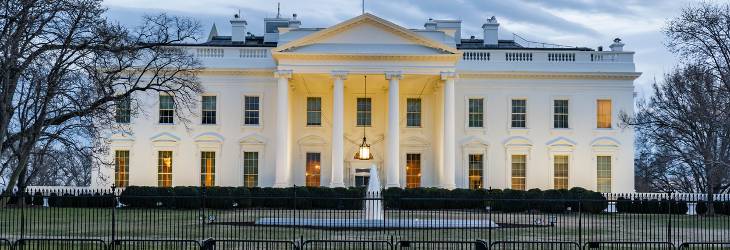Typically housed within the study of Rhetoric, Political Communication, Public Address, and Persuasion, scholars of Presidential Communication examine the various communicative phenomena that occur in the context of the American Presidency through an array of methodological lenses. As the American Presidency has evolved, so too has the study of Presidential Communication. In this article, we briefly trace Presidential Communication in American history, highlight the evolution of this area of inquiry, outline some approaches and perspectives in examining how presidents communicate, and feature several important scholars in the field.
Presidential Communication in American History
In 21st Century America, the President of the United States is easily recognizable. Thanks in part to modern practices in political communication, mass media innovations, and an expansion of the role of campaign communication in presidential elections, many Americans know who the president is. In addition, Presidential Communication has allowed citizens to evaluate how their values and principles align or do not align with the projected ideology of the presidency.
Before being elected, the eventual president is introduced to the American public through the lengthy and often arduous campaign for the presidency. This campaign involves the strategic production and dissemination of political advertisements on television, the internet, and radio, often featuring a series of televised debates that the 24-hour news cycle further amplifies. The president’s Inaugural Address is then broadcasted live on television and streamed to an even wider audience on the internet. Once situated in office, a president can wield both the power of the office and modern technology to communicate to the public at a moment’s notice.
However, this was not always the case. Indeed, like most forms of Political Communication, Presidential Communication can be placed upon a timeline of mass media technological development, making Political Communication and Presidential Communication almost synonymous and sometimes causing a conflation between the two. Simply put, Presidential Communication can be described as a focused form of Political Communication, reliant upon principles of Political Communication, but open to other influences like Rhetoric and Persuasion (see below for more information).
Before the rapid advancements in mass communication technology in the 20th Century, most Americans only knew of the president through reprints of their speeches, newspaper and magazine articles, and posters. Indeed, Presidential Communication before radio and television occupies a vastly different reality than what we know of today.
Without question, Presidential Communication is certainly different today. However, some forms of Presidential Communication have endured since the republic’s founding almost two and a half centuries ago. One such mode of Presidential Communication that has endured is the State of the Union Address, which is a constitutionally mandated communication from the president to Congress.
As it turns out, the Constitution is rather vague in properly defining this form of Presidential Communication. Indeed, Article II-Section 3 famously states that “He shall from time to time give to the Congress Information of the State of the Union, and recommend to their Consideration such Measures as he shall judge necessary and expedient” (National Constitution Center, n.d.). Although the State of the Union is typically delivered to Congress in the form of speech, every president from Thomas Jefferson to William Howard Taft wrote their message in a letter to Congress. Before Woodrow Wilson revived the oral tradition in 1913, the State of the Union as a mode of Presidential Communication was devoid of the ceremony we now associate with the event.
As highlighted in our Guide to Mass Communication, radio played a pivotal role in the reshaping of American society, particularly in the realm of Presidential Communication. Throughout his tenure as commander-in-chief, Franklin Delano Roosevelt frequently utilized radio to address the American public directly. It was television, however, that forever altered both Presidential Communication and the academic study of it.
Most famously, the first televised presidential debates between John F. Kennedy and Richard Nixon in 1960 cemented the televisual and the political together. While the 1950s certainly saw instances of American politics broadcast live on television – including Nixon’s “Checkers” Speech and the McCarthy hearings – it wasn’t until the end of the decade that nearly 90% of American households owned a television, making the Kennedy-Nixon debates a better line of demarcation.
With television, new forms of Presidential Communication came into being. For example, televised presidential press conferences, the Oval Office Address, and broadcasted campaign rallies are but a few of the practices of Presidential Communication that were introduced or altered because of television.
Featured Scholars Researching Presidential Communication
Given the popularity, enduring relevance, and always-changing nature of Presidential Communication, scholars studying the presidency from a communicative perspective number, quite possibly, in the hundreds. Without question, there are a number of researchers worthy of mention here – both of the senior and junior variety – and their work is crucial to the study and proliferation of Presidential Communication. To provide students a better understanding of the varying perspectives that embody Presidential Communication, we feature in this section several scholars that have helped define, shape, and expand the field to new realms of research and insight.
Featured recently in an article on presidential rhetoric in The Washington Post, Dr. Ann Burnette examines the rhetorical contours of Presidential Communication as it intersects with the First Amendment, gender, race, and history. She is both an award-winning instructor and a tenacious researcher. In 2015, Texas State University awarded Dr. Burnette its Presidential Award for Excellence in Teaching and in 2016 Dr. Burnette won the Southern States Communication Association’s John I. Sisco Excellence in Teaching Award. At the graduate level, Dr. Burnette teaches courses in Political Communication, American Speeches, Rhetorical Research Methods, and the Rhetoric of Women’s Rights.
In her research, Dr. Burnette – working with the esteemed Dr. Rebekah Fox – recently published “War stories: Trump’s narratives and the freedom of the press” in the Communication Law Review. Working again with Dr. Fox, Dr. Burnette (2012) examined constructions of gender in Presidential Communication for the Journal of Contemporary Rhetoric in an article entitled “My three dads: The rhetorical construction of fatherhood in the 2012 Republican presidential primary.” For more information on Dr. Burnette, be sure to read the following interview.
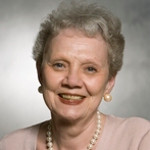
Without question, Dr. Campbell is a scholarly pioneer in every sense of the word. In addition to being in the inaugural class of the National Communication Association’s Distinguished Scholars, Dr. Campbell has won numerous awards over the course of her career, including “the Ehninger Award for Distinguished Rhetorical Scholarship, the Winans-Wichelns Book Award, the Charles Woolbert Award for Scholarship of Exceptional Quality and Influence and the University of Minnesota Distinguished Woman Scholar Award.
Much of Dr. Campbell’s research focuses on social movement and women’s rhetoric, rhetorical theory and criticism, and presidential communication. Dr. Campbell and Dr. Jamieson wrote a foundational text in the study of Presidential Communication – Presidents Creating the Presidency: Deeds Done in Words. For more information on Dr. Campbell, visit her page at the University of Minnesota’s website.
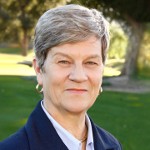
Dr. Jamieson is truly a titan in Communication Studies. Currently the Director of the Annenberg Public Policy Center and the Elizabeth Ware Packard Professor of Communication at the University of Pennsylvania’s Annenberg School for Communication, Dr. Jamieson’s prestige is rooted in incredible scholarly contributions and distinguished teaching. Dr. Jamieson’s research areas include discourses on the presidency, presidential campaigns, political communication, and rhetorical theory.
In addition to Dr. Jamieson’s most recent book, Cyberwar: How Russian Hackers and Trolls Helped Elect a President, six of the books that Jamieson has authored or co-authored have received nine awards in political science and political communication. Moreover, Dr. Jamieson recently co-edited The Oxford Handbook of Political Communication and The Oxford Handbook of the Science of Science Communication. For more information on Dr. Jamieson, visit her page at the Annenberg School for Communication’s website.

Recently joining the distinguished and storied Department of Communication Arts at the University of Wisconsin - Madison, Dr. Allison Prasch is a prolific researcher, writer, and instructor in Presidential Communication. Indeed, Dr. Prasch’s research can be found in the pages of the field’s top journals, including the Quarterly Journal of Speech, Rhetoric & Public Affairs, and the Southern Communication Journal. Dr. Prasch studies a wide range of presidential rhetoric throughout history, including how it manifests in presidential museums and in foreign policy contexts.
Teaching courses on presidential rhetoric, public address, rhetoric in foreign policy, and the history of rhetoric within the presidency, Dr. Prasch recently articulated in an interview that she hopes students leave her classes with “a sense of wonder, curiosity, and interest in how rhetoric shapes our everyday lives” (University of Wisconsin - Madison, n.d.). For more information on Dr. Prasch, read the rest of her New Faculty Focus interview with the University of Wisconsin – Madison.

Considered to be one of the leading experts in Presidential Communication, Dr. Mary Stuckey is “the author, editor, or co-editor of twelve books and author or coauthor of roughly 80 essays and book chapters” on presidential rhetoric and political communication (Penn State University, n.d.). Throughout her research, Dr. Stuckey has revealed the communicative nuances in presidents as varied as Woodrow Wilson, Jimmy Carter, Ronald Reagan, FDR, and George W. Bush. Additionally, Dr. Stuckey helped pioneer the study of presidential museums, bringing together scholarship in public memory and rhetoric’s materiality.
In addition to winning awards like the Michael M. Osborn Teacher-Scholar Award and the Roderick P. Hart Outstanding Book Award, Dr. Stuckey recently won the National Communication Association’s Distinguished Scholar Award, placing her in the company of the discipline’s most renowned scholars. Her reach also extends to the field’s most respected and well-known journals – Dr. Stuckey just finished her tenure as the editor of the prominent Quarterly Journal of Speech and has previously served as the editor for the Southern Communication Journal. For more information on Dr. Stuckey, visit her page at Penn State’s Department of Communication Arts and Sciences website.
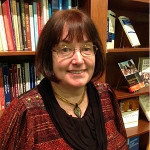
Currently helping to helm Georgia State University’s Transcultural Conflict and Violence Initiative, Dr. Winkler’s research generally focuses on terrorism and other forms of extremism, particularly as they manifest online, conflict communication, and presidential foreign policy rhetoric. This impressive research repertoire continues to yield an extraordinary publication record with recent publications in the Journal of Police, Intelligence, and Counterterrorism and the Journal of Argumentation in Context.
Perhaps Dr. Winkler’s most well-known book, In the Name of Terrorism, won the Outstanding Book Award in Political Communication from the National Communication Association for its in-depth examination of the intersection of presidential rhetoric, US foreign policy, and terrorism. For more information on Dr. Winkler, visit her page at Georgia State University’s Department of Communication website.
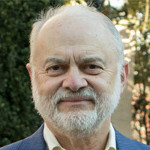
Another pioneer in Presidential Communication, Dr. David Zarefsky has produced some of the foundational texts in the study of Presidential Communication – including “Presidential Rhetoric and the Power of Definition” and President Johnson’s War on Poverty: Rhetoric and History. Dr. Zarefsky has served as the president of the Rhetoric Society of America, the National Communication Association, and the Central States Communication Association.
Currently Professor Emeritus in the Department of Communication Studies at Northwestern University, Dr. Zarefsky teaches courses on presidential rhetoric (with a focus on Lincoln, Kennedy, and LBJ), argumentation, and rhetorical history. For more information on Dr. Zarefsky, visit his page at Northwestern University’s Department of Communication website.
The History of Presidential Communication Scholarship
Modern iterations of Presidential Communication scholarship can be traced to the founding of Communication Studies some one hundred years ago. Initially, to study Presidential Communication was to study Public Address. This relationship fostered what can be termed the “Great Men – Great Speeches” approach, or Public Address scholars almost singularly focusing on famous men and their great speeches.
While American presidents were not the only subject in this approach, they did sometimes occupy a majority of the focus of Public Address scholars. Thankfully, this approach diminished in popularity and relevance as new methods and perspectives were developed – as highlighted below.
More crucially, however, the study of Presidential Communication experienced a noteworthy schism between Communication and Political Science scholars almost forty years ago. In 1981, Political Scientists and government scholars Ceaser et al. published an article in Presidential Studies Quarterly entitled “The Rise of the Rhetorical Presidency.” In the article, the authors largely lamented what they saw as an increasing reliance upon “popular or mass rhetoric” and the media by American presidents in that presidential leadership was now “based on words, not power.”
In a sense, the advent and concept of the “rhetorical presidency” helped distinguish Communication scholars studying the presidency from their Political Science counterparts, as Communication scholars believe “that presidential rhetoric and the symbols associated with the presidential office matter” (Stuckey, 2010). This is not to say that Political Science scholars do not believe presidential rhetoric doesn’t matter, rather, presidential rhetoric is an important component within the larger field of Presidential Communication.
To clarify the differences and overlaps between Political Communication, Presidential Communication, and Political Science, several key definitions and distinctions are outlined below:
- Political Communication examines the role communication plays in the political process. This is an umbrella term as various Political Communication scholars have their preferred foci.
- One of those foci is Presidential Communication. Presidential Communication studies the role of communication in the context of the American presidency. While certainly a branch of Political Communication, Presidential Communication also encompasses scholarship in the areas of Rhetoric, Public Address, and Persuasion.
- Political Science is a broad and diverse field of study that includes the American presidency, as well as other stakeholders, institutions, and power dynamics within political spheres, and their impact on society. Political scientists certainly study the presidency and presidential communication – in fact, these topics are one of the discipline’s largest and most popular divisions and interest groups. But by and large, the focus of political science is broader, and more focused on the intent behind and the results of political communication, rather than the communications themselves.
Approaches & Perspectives in Studying Presidential Communication
Corresponding to the development of Communication Studies as its own, distinct academic discipline, scholars of Presidential Communication developed and altered approaches to studying the communicative functions of the American Presidency. For example, while the advent of the “rhetorical presidency” split scholars from Communication and Political Science, the concept has undergone a reevaluation in recent years from scholars within our discipline. In short, the field has moved from examining and reifying the concept of the institutionalized “rhetorical presidency” to that of studying presidential rhetoric, or the “symbols associated with the presidential office” that hold incredible power in articulating “our national definitions,” constituting our national identity, and moving policy forward (Stuckey, 2010).
Elucidating this reevaluation further, Stuckey (2010) argued that the rhetorical presidency “is above all an argument about the institution of the American presidency,” and “the best work on both the rhetorical presidency and on presidential rhetoric has been profoundly institutional in its orientation.” In primarily focusing on the institutional aspect, Stuckey (2010) wrote, scholarship often “overlooked” aspects of the American presidency that reify hegemonic racial, class, and gender constructs of the office – that we take as the norm that the presidency is primarily a white, male, and upper-class dominated institution.
At the urging of Stuckey (2010) and others, the study of Presidential Communication has indeed undertaken a rethinking in approach and perspective. For example, within Rhetorical Studies, more essays are being published that consider and challenge presidential rhetoric as it relates to race, class, and gender. Additionally, presidential rhetoric scholars began examining the material and visual aspects of Presidential Communication, typically in the form of museums, monuments, and television.
The rise of the social sciences also altered perspectives in studying Presidential Communication. Working in tandem with their colleagues in Political Science, many Political Communication researchers turned their attention to polling, surveys, coding, and other modes of both quantitative and qualitative analyses, and sought to understand and explain the presidency in numbers and graphs. Indeed, this research yielded significant insight into public opinion as it relates to the presidency, the efficacy of Presidential Communication, and effects of Presidential Communication.
For example, K. Coe et al. (2017) examined Presidential Communication about “marginalized groups,” particularly as the communication pertained to the LGBT community. Focusing on “formal public communication” from Presidents Ford to Trump about the LGBT community, the researchers searched for every mention of terminology typically used in describing the community (like “same-sex,” “gay,” “lesbian,” etc.) and then coded these instances into several categories. Ultimately, K. Coe et al. (2017) found that while Presidential Communication regarding the LGBT community has indeed increased in the aforementioned timeframe, presidents, by and large, “have paid remarkably little attention to the LGBT community.”
In all, scholars studying Presidential Communication have expanded their approaches and perspectives. In particular and relatively recently, scholars have reconsidered the study of Presidential Communication to challenge long-held assumptions regarding institutional norms and practices. For more examples of research in the field of Political and Presidential Communication, see our featured scholars section above.
Presidential Communication Today
Today, the scholarly inquiry into the ways in which presidents communicate is perhaps more important than ever. Indeed, in an age when a president can sink markets or appeal to our common humanity in a single tweet, studying Presidential Communication is essential to the health of our republic.
Students looking to focus on studying Presidential Communication at the master’s level can find more recent research in a myriad of journals that prominently feature this discipline, which include Rhetoric & Public Affairs, Presidential Studies Quarterly, the Quarterly Journal of Speech, and both the Western Journal of Communication and the Southern Communication Journal. In addition, relevant information on the status of Presidential Communication in our country can be found at the National Communication Association annual conference and at regional communication association conferences. Additionally, MastersinCommunications.com has a comprehensive directory of master’s in political communication programs for students interested in studying presidential communication.
Sources and Additional Resources
To learn more about the study of Presidential Communication, including its history and research in the field, check out the following publications:
- Campbell, K. K., & Jamieson, K. H. (2008). Presidents Creating the Presidency: Deeds Done in Words. University of Chicago Press.
- Ceaser, J. W., Thurow, G. E., Tulis, J., & Bessette, J. M. (1981). The Rise of the Rhetorical Presidency. Presidential Studies Quarterly, 11(2), 158–171. Retrieved from https://www.jstor.org/stable/27547683
- Coe, K., Bruce, R. J., & Ratcliff, C. L. (2017). Presidential Communication About Marginalized Groups: Applying a New Analytic Framework in the Context of the LGBT Community. Journal of Communication, 67(6), 851–873. https://academic.oup.com/joc/article-abstract/67/6/851/4753853?redirectedFrom=fulltext
- Jamieson, K. H. (1996). Packaging The Presidency: A History and Criticism of Presidential Campaign Advertising. Oxford University Press.
- National Constitution Center. (n.d.). The 2nd Article of the U.S. Constitution. Retrieved from National Constitution Center – The 2nd Article of the U.S. Constitution website: https://constitutioncenter.org/the-constitution/articles/article-ii
- Penn State University. (n.d.). Mary E. Stuckey—Department of Communication Arts & Sciences. Retrieved from https://cas.la.psu.edu/people/mary-stuckey/
- Stuckey, M. E. (2010). Rethinking the Rhetorical Presidency and Presidential Rhetoric. Review of Communication, 10(1), 38–52. https://www.tandfonline.com/doi/abs/10.1080/15358590903248744
- Trent, J. S. (1978). Presidential Surfacing: The Ritualistic and Crucial First Act. Communication Monographs, 45(4), 281. https://www.tandfonline.com/doi/abs/10.1080/03637757809375974
- University of Wisconsin – Madison. (n.d.). New Faculty Focus: Allison Prasch. Retrieved from https://news.wisc.edu/new-faculty-focus-allison-prasch/
- Zarefsky, D. (2004). Presidential Rhetoric and the Power of Definition. Presidential Studies Quarterly, 34(3), 607–619. Retrieved from https://www.jstor.org/stable/27552615
- Zarefsky, D. (2005). President Johnson’s War On Poverty: Rhetoric and History. University of Alabama Press.
Additional Topics on Research in Political Communication
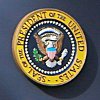
Our Guide to Political Communication Research examines how political messaging and conversations between political candidates, parties, government agencies, advocacy groups, and the public shape policy and society.

This guide explains the history and significance of Social Movement Communication, providing useful examples of the ways in which communication has been instrumental in movements that have led to political and social progress.
